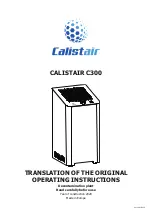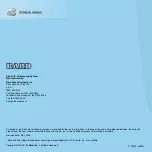
WARNING! Using fewer laps will weaken block causing it to break suddenly when load is
applied.
Lashing to Boom
When lashing to a large object such as a boom, cross each line to prevent pushing out on sides of head.
See next page.
Inspect Line
Check knots or splices before sailing. Use a double fisherman's knot or other secure knot.
If you have access to end of boom, twist each lap. Secure using double fisherman’s knot or other secure
knot. See "Lashing to Bail Using Harken-Supplied Line" below.
Under
Over
Under
Over
Under
Over
Lines can pull
head apart.
3. Use three laps of line to create six strands to match the maximum working load of the block.
Lashing to Bail Using Harken-Supplied Line
Use three laps to create six strands. Tie ends using double fisherman's knot or other secure knot. Knot
can also be located on side of block or inside the mouth. Photos are not intended to teach this knot. See
www.harken.com/knots or consult a knot tying book.
Important: If you are not comfortable tying this
or other secure knots get help from professional rigger.
Periodically inspect lashing line for chafe or UV damage.
Replace damaged
line immediately. Replace line with no visible damage every two years.
Use Harken replacement line, but if using your own line, see “Using Alternate
Line, Knots, and Splices” and chart on back page for important information
to help you select the correct line.
This block only has two laps,
four strands of supplied line.
WARNING! Failure to inspect and replace UV-damaged, worn, or frayed line can cause
the line to break suddenly when load is applied.
WARNING! Failure to inspect and correct knots can cause the line to slip suddenly when
load is applied.
2
Laps
Three laps, six strands are
required for proper strength.
To lash block at 90° cross lines each
pass similar to lashing to boom.
Use a spliced or tied loop (not supplied) to
create a becket or splice directly to mouth.
Make loop or eye splice long enough so
“X” is longer than sheave diameter “Y”.
A short loop can cause sideplate to bind
against sheave.
X
Y
Y
X
4368-10--03-11.indd 2
10/26/2011 12:18:23 PM




















